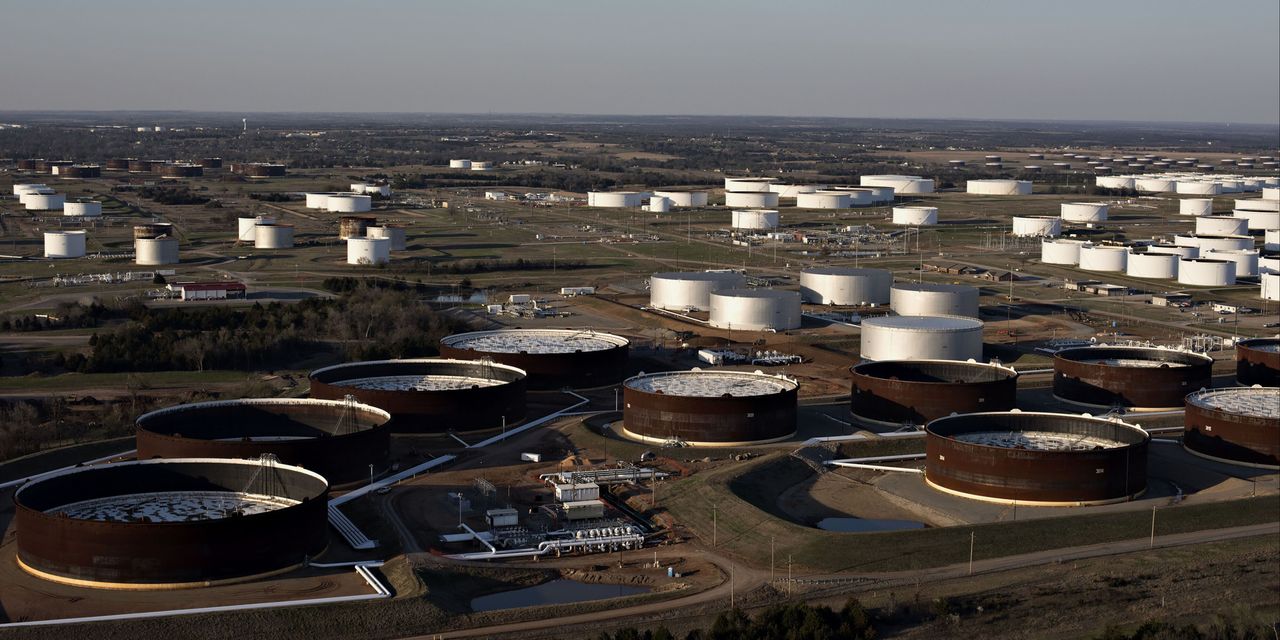An Oklahoma oil hub could soon be home to the first large-scale oil refinery constructed in the U.S. in nearly 50 years. If the project actually does get built, it could potentially help reduce U.S. gasoline and diesel prices. But building a U.S. refinery is so complicated that at least one analyst is skeptical it will actually happen.
Privately held Southern Rock Energy Partners says it will build a refinery capable of producing 250,000 barrels per day of oil products in Cushing, Okla., a city that’s already a major oil hub. It’s where the U.S. benchmark for oil prices, West Texas Intermediate, is measured. The company says its refinery will cost $5.6 billion and open in 2027, with construction starting up next year.
“There still is a demand for fossil fuels for transportation,” said Steven Ward, managing member of Southern Rock, of El Campo, Texas, in an interview. Ward has been in the oil and gas business for about 30 years, but has never built or operated a refinery. He says the company and its partners can succeed where others have failed because “we’re a smaller, more nimble company.” The refinery will only process U.S.-produced oil; most large U.S. refineries were built to process heavier imported crudes that can be more complex to handle.
The company still needs state and federal permits to start construction, and has only part of the financing necessary, Ward said. Oklahoma state representatives have praised the project publicly, saying it will deliver a much-needed jolt to the local economy and job market. State and local financial incentives are expected to help finance the project.
If it does succeed, Southern Rock’s refinery would be a game-changer for domestic oil. The last major U.S. oil refinery was built in 1977 in Louisiana. Refineries constructed since then had capacities of less than 50,000 barrels when they started up. It’s difficult to get permits and financing to build a refinery, and they can take several years to build—a tough proposition in an industry where the prices of key products can fluctuate wildly in a matter of a few months. In fact, six U.S. refineries with the cumulative capacity to refine 750,000 barrels of oil closed during 2020 and 2021—a significant hit in a country with about 18 million barrels of capacity. Last year,
Chevron
(CVX) CEO Mike Wirth predicted that no large-scale refinery would ever be built again in the U.S.
A lack of refining capacity in the U.S. and elsewhere was one reason that gasoline prices spiked even more than the price of oil in 2022. With Russian oil products being sanctioned, refineries elsewhere raced to produce more diesel and gasoline for the European market, causing margins to rise sharply. Some U.S. companies announced expansions, with
Exxon Mobil
(XOM) recently adding 250,000 barrels of capacity at one existing refinery. And a small privately owned refinery opened last year in Galveston, Texas, pumping out 45,000 barrels a day. But companies haven’t announced large new refining projects.
The dearth of refineries has been getting more attention since last year’s spike in gasoline prices. Investor Kevin O’Leary, a host on the “Shark Tank” television show, said last month that he wants to build a $14 billion refinery somewhere in the U.S. but did not detail his full plans. “I’m going to get a permit and we’re going to do the right thing for America,” he said on Fox Business. “We have to have more refineries.”
Southern Rock’s refinery will have some special characteristics appropriate for the cleaner-energy age, Ward says. That includes operations powered by solar panels and geothermal energy, and the use of recycled water. The facility will also be able to produce hydrogen, an element that’s expected to become a key fuel for low-carbon power, and use that hydrogen to replace natural gas in parts of the process.
Given the recent history of these kinds of proposals, however, there is some doubt among observers. Matthew Blair, an analyst at Tudor, Pickering, Holt, wrote in an email to Barron’s that the odds are low that Southern Rock’s plans come to fruition. “It seems like every year someone announces a new refinery for the U.S.,” he wrote. “But they almost never get built, given the challenges on economics and permitting.”
In a note, Blair wrote that the high cost of opening a new refinery shows how inexpensive refinery stocks trade in terms of replacement value. For example, refiner
PBF Energy
(PBF) has a market value of only about $5 billion, despite operating refineries with total capacity of more than one million barrels per day, along with a new renewable diesel plant, and several other assets. If a new 250,000-barrel-per-day refinery costs $5.6 billion to build, PBF should arguably be worth more.
Write to Avi Salzman at [email protected]
Read the full article here


